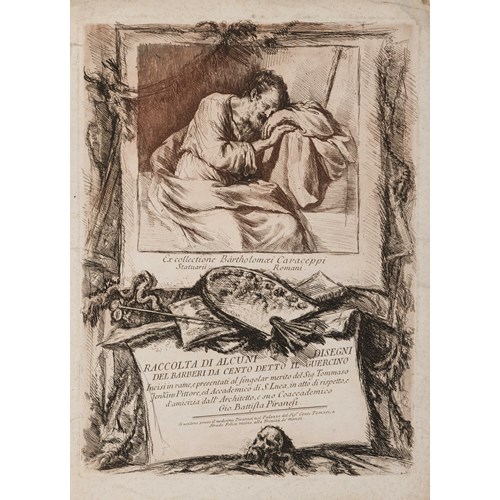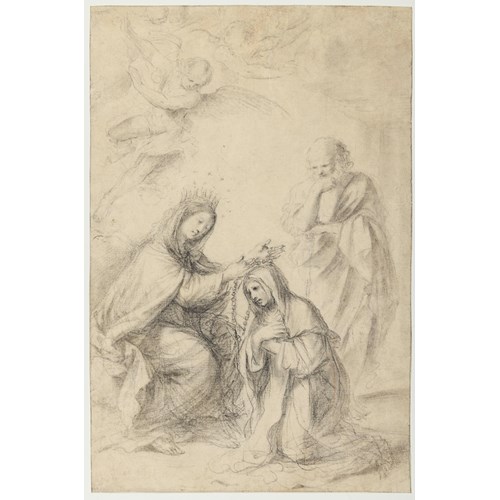Gustav KLIMT
Two Female Nudes
Medium Black chalk on buff paper
Dimension 44.3 x 30.9 cm (17¹/₂ x 12¹/₈ inches)
As Tobias Natter has noted of the origins of the Beethoven Frieze project, ‘The development of the concept of the Gesamtkunstwerk – or total work of art – and its realization in a number of exhibitions and architectural schemes can possibly be considered the most significant achievement of the artistic revolution in Vienna around 1900. Artists, architects and designers as well as poets, dramatists and musicians created sophisticated works of art in intense collaboration, attempting to create an artistic and stylistic whole executed to the highest standards of craftsmanship and material authenticity. The pinnacle of the purposeful integration of all arts was the fourteenth Secession exhibition from April to June 1902, the ‘Beethoven Exhibition’…In the Beethoven exhibition, architecture, painting and sculpture came together in a coherent whole around the celebration of the life and music of the composer Ludwig van Beethoven and his Ninth Symphony in particular. Klimt’s magnificent Beethoven Frieze, the artist’s largest surviving integrated scheme, was intended as part of the Secession’s homage to the composer, represented by the Leipzig artist Max Klinger’s polychrome sculpture, which formed the centrepiece of the show. The Secession deliberately set out to realize an ambitious scheme that fully utilized painting and sculpture in a carefully designed interior space devoted to the worship of the artistic genius of Beethoven.’
Klimt’s Beethoven Frieze was situated in one of the two wings of the Secession building, placed within a staging designed by the architect Josef Hoffman, and was comprised of two long side walls and a short end wall. Running along the top of all three walls, the frieze measures just over two metres in height and is some thirty-four metres long. The elaborate allegorical narrative of the frieze, intended to be read from left to right, depicted a series of figures representing, as one scholar has noted, ‘humanity’s journey and struggle against adversity in its yearning for happiness with the eventual triumphant wish for fulfilment expressed in communal joy...Klimt’s Friezerepresents an idiosyncratic homage to Beethoven’s Ninth Symphony in which the artist interprets a musical piece through a highly inventive and imaginative visual narrative.’
As Rainer Metzger has noted of Klimt’s preparatory process for the Beethoven Frieze, ‘a large number of studio sketches were produced that explored the individual figures and groups of the Beethoven Frieze, the male and the female, the young and the old. Klimt applied the casein paint directly to the plaster on the basis of this collection of materials. The drawings were put on paper in full knowledge of their subsequent use, many of them including poses that can be found on the wall. The figures are often shown as very compact silhouettes or clearly outlined shapes, in the same way that they appear on the large surface of the frieze. These preliminary drawings had a very specific purpose, and the fact that they were to be included in a frieze was already implicit in their form. This gives them a concision and self-containedness that other drawings lack.’
The first owner of the present sheet was the Viennese industrialist and art collector August Lederer (1857-1936). The second wealthiest family in Vienna, after the Rothschilds, the Lederers assembled a superb art collection, mostly devoted to artists of the Vienna Secession. August Lederer, his wife Serena and eldest son Erich were also the most important patrons and collectors of Gustav Klimt’s work. They owned some twenty paintings by Klimt, including the Beethoven Frieze fresco, as well as numerous drawings, although much of their collection of paintings was destroyed during the Second World War. As Christian Nebehay has noted, ‘Special mention must be made of the Klimt drawings in the Lederer Collection, which fortunately survived the chaos of the war years. One could justly claim that this collection is, for sheer quality, the finest known. We find here, selected by a discriminating taste, a large number of Klimt’s most notable drawings.’
Medium: Black chalk on buff paper
Signature: Signed with the artist’s initials G. K. at the lower centre and inscribed R at the lower right.
Numbered 21 in a circle on the verso.
Dimension: 44.3 x 30.9 cm (17¹/₂ x 12¹/₈ inches)
Provenance: August Lederer, Vienna
By descent to his son, Erich Lederer, Vienna and Geneva
The Piccadilly Gallery, London, in 1973
Private collection.
Literature: London, The Piccadilly Gallery, Gustav Klimt, exhibition catalogue, 1973, unpaginated, no.24; Alice Strobl, Gustav Klimt: Die Zeichnungen. Vol.I: 1878-1903, Salzburg, 1980, pp.242-243, no.821, fig.821 (where dated 1902).
Exhibition: London, The Piccadilly Gallery, Gustav Klimt, 1973, no.24.
More artworks from the Gallery






_T638636512051387495.jpg?width=500&height=500&mode=pad&scale=both&qlt=90&format=jpg)


